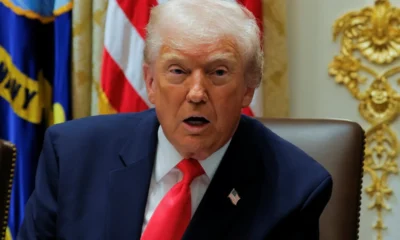Politics
“Gone With the Walls”: Historic White House Movie Theater Demolished Amid $300 Million Ballroom Project — What Comes Next?
The iconic White House Family Theater, where U.S. Presidents once watched films with Hollywood stars and diplomats, has been torn down to make way for a new East Wing ballroom — a $300 million project reportedly supported by Comcast, Amazon, and Apple.

In a dramatic turn that blends nostalgia with modernization, one of America’s most private and storied cinemas — the White House Family Theater — has been demolished. The move, part of a sweeping $300 million renovation to construct a new ballroom in the East Wing, has left historians and film buffs both stunned and curious: what will take its place?
According to photos released Thursday, the entire East Wing, including the East Colonnade that once connected the theater to the heart of the White House, has been torn down. The demolition marks the beginning of a bold expansion plan reportedly greenlit during Donald Trump’s administration.
A source familiar with the project told reporters that the theater “will be modernized and renovated with the rest of the East Wing,” suggesting that the beloved screening room could be reborn — albeit in a different form.
“It’s not gone forever,” the insider said. “It’s being reimagined for a new era — a space that honors its past while embracing the future.”
ALSO READ : Rockets Guard Fred VanVleet Tears ACL and Likely to Miss 2025-26 Season
A Presidential Tradition — From Roosevelt to Obama
The White House Family Theater wasn’t just a private cinema; it was a symbol of presidential leisure and diplomacy. Originally converted from a cloakroom in 1942 during Franklin D. Roosevelt’s presidency, the small, red-carpeted theater seated about 42 guests.
Over the decades, it became an exclusive stage where American leaders, their families, and select guests enjoyed private screenings. From John F. Kennedy watching Spartacus to Ronald Reagan’s love for Westerns, and Barack Obama previewing Lincoln before its release, the room held decades of cinematic and political history.
Hollywood also left its mark. Stars like Tom Hanks, Steven Spielberg, and Meryl Streep were among the few to receive the coveted invitation to private White House screenings.
“It wasn’t just a theater,” said a former staff historian. “It was where politics met pop culture — a soft power space where films shaped conversations, and sometimes, perspectives.”
The $300 Million Ballroom — A Symbol of Power and Prestige
The new ballroom project, estimated at $300 million, is reportedly being funded by a mix of private and corporate donors, including Comcast, Amazon, and Apple. Sources close to the project describe the ballroom as a “state-of-the-art, multi-purpose venue” designed to host major diplomatic, cultural, and entertainment events within the East Wing.
While the White House Press Office has yet to release official renderings, early speculation suggests the new space will feature advanced audio-visual technology, flexible seating for large state dinners, and a private screening capability — potentially a nod to the demolished theater’s legacy.
A former White House architect, speaking anonymously, said the reconstruction “reflects a shift in the symbolism of the East Wing — from intimacy to influence.”
Preservationists Express Concern
Not everyone is celebrating the change. Preservationists have voiced unease about losing a piece of presidential history in favor of modernization.
“The theater was a cultural artifact — a time capsule of American storytelling at the highest level of power,” said one member of the National Trust for Historic Preservation. “Demolishing it for a ballroom risks erasing part of that legacy.”
However, insiders assure that the modernization includes plans to restore the theater’s aesthetic spirit, possibly with original memorabilia and design references integrated into the new build.
“Think of it as a rebirth, not a replacement,” a source emphasized.
A Glimpse Into the Future
The decision to modernize aligns with a broader movement to reimagine the White House as both a historical monument and a functioning 21st-century institution. Similar updates were seen under previous administrations, such as the digital infrastructure overhaul initiated by Michelle Obama and continued during Trump’s term.
While details of the new design remain tightly guarded, one thing is certain — the new East Wing will mark a new era of presidential hospitality and power projection. Whether the iconic Family Theater is restored or reimagined, its legacy will continue to flicker — somewhere between history and innovation.
Politics
“Egg on Their Face”: DOJ’s Failed Trump Revenge Prosecutions Trigger Legal Embarrassment
From dismissed indictments to grand jury rejections, the Justice Department’s attempts to prosecute Trump critics have unraveled in dramatic fashion
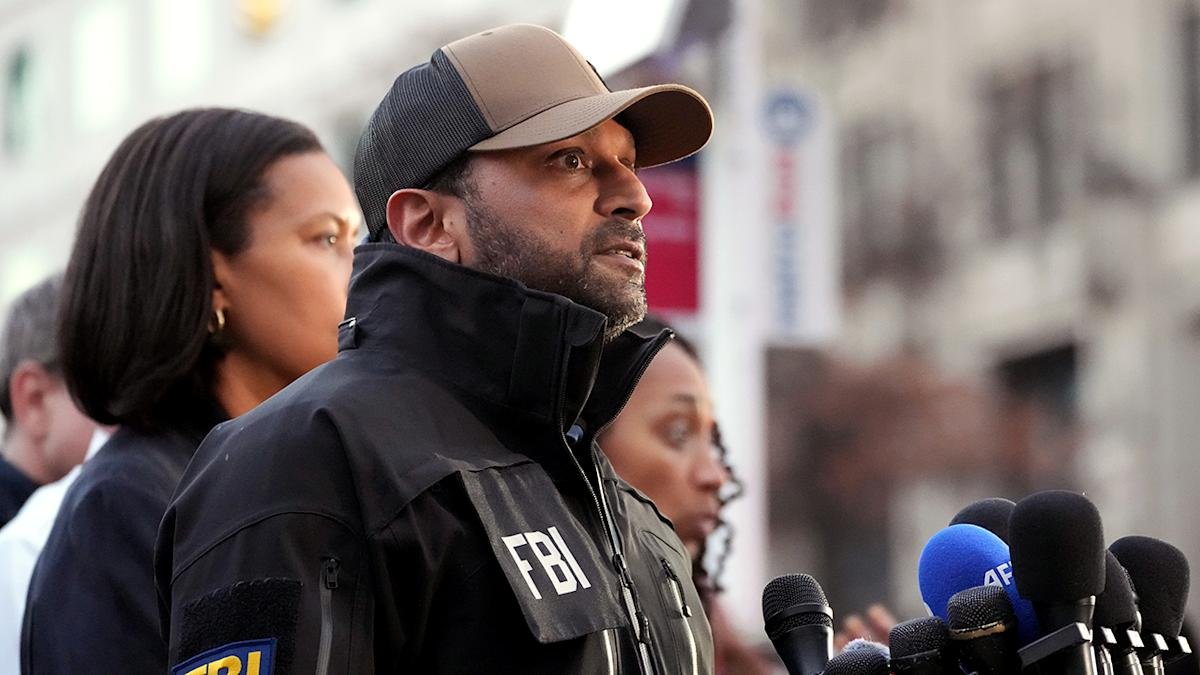
The U.S. Department of Justice (DOJ) is facing growing scrutiny and embarrassment after a string of high-profile failures tied to attempts to prosecute critics of President Donald Trump. What was meant to project strength and accountability has instead exposed deep cracks in federal prosecution strategy, according to legal experts and former prosecutors.
In a sequence of setbacks rarely seen in modern federal law enforcement, the DOJ has suffered dismissed indictments, blocked evidence, and, most strikingly, two federal grand juries refusing to indict one of its key targets — New York Attorney General Letitia James.
The most damaging blow came on December 11, when a second grand jury declined to issue charges against James, just days after another grand jury rejected the same effort. Her attorney, Abbe Lowell, called the outcome “unprecedented,” a sentiment echoed by multiple former federal prosecutors.

Earlier indictments against both James and former FBI Director James Comey were thrown out after a federal judge ruled that the special prosecutor who brought the cases, Lindsey Halligan, had been unlawfully appointed. Adding to the DOJ’s woes, a judge also blocked prosecutors from using key evidence against Comey, citing possible constitutional violations.
“This is an embarrassment,” said Neama Rahmani, a former federal prosecutor. “The last thing you want to be as a prosecutor is to be on the defensive — and that’s exactly what’s happening here.”
Trump’s Longstanding Vendettas
Trump’s hostility toward both Comey and James dates back years. He fired Comey in 2017 while the FBI was investigating potential links between Trump’s 2016 campaign and Russia. James later sued Trump in 2022 for civil fraud related to his real estate business, a case that deeply angered the former president.
In a September 20 social media post, Trump openly called for the prosecution of Comey, James, and Sen. Adam Schiff of California. While investigations were launched, results have been deeply underwhelming.
An NBC News report revealed that the DOJ’s investigation into Schiff has stalled entirely, with internal probes reportedly underway to examine how the case was mishandled. The DOJ has declined to comment on its performance in these matters.
Loyalty Over Experience
According to multiple reports, career prosecutors — including the interim U.S. attorney for the Eastern District of Virginia — had previously concluded the evidence against James and Comey was too weak to sustain charges. Trump publicly criticized and fired the U.S. attorney, later urging Attorney General Pam Bondi to appoint Lindsey Halligan, his former personal lawyer, despite her lack of prosecutorial experience.
Bondi acted swiftly, and Halligan secured indictments against both Comey and James. But the cases quickly collapsed.
In Comey’s case, Magistrate Judge William Fitzpatrick described a “disturbing pattern of profound investigative missteps,” including possible violations of the Fourth Amendment. Judge Cameron McGowan Currie, a Clinton appointee, ultimately dismissed all charges after ruling Halligan’s appointment unlawful.
“The prosecutions haven’t amounted to much in court,” said Carl Tobias, a law professor at the University of Richmond. “Except to harass them — which may have been the point.”
Grand Jury Rejections: A Rare Humiliation
Perhaps the most humiliating moment for the DOJ came when two separate grand juries rejected efforts to re-indict Letitia James. Legal experts stress how extraordinary this is.
Former federal prosecutor Mitchell Epner said he sought hundreds of indictments in his career and failed only once. “To go before two grand juries in a week and fail both times is humiliating and a repudiation of the prosecution,” he said.
Barbara McQuade, former U.S. attorney under President Barack Obama, was even more blunt:
“When prosecutors are selected based on loyalty rather than experience and integrity, this is the sort of garbage we can expect.”
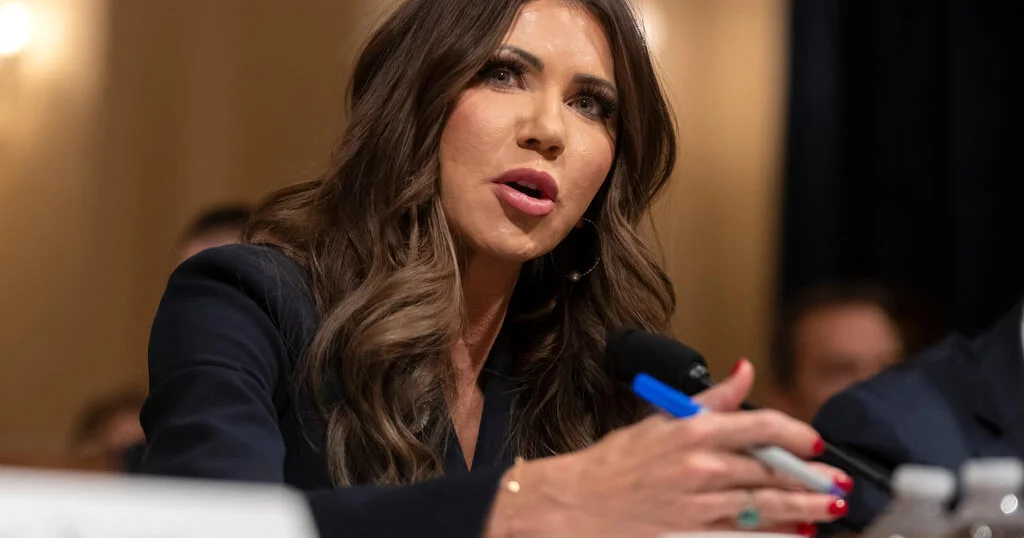
Comey Case Still on Shaky Ground
The DOJ has suggested it may try to re-indict Comey, but significant hurdles remain. A federal judge has temporarily blocked prosecutors from using key evidence obtained during a separate 2017 investigation, ruling it may have been seized unconstitutionally.
Even if that hurdle is cleared, prosecutors face another problem: time. The original indictment was issued just days before the statute of limitations expired. Comey’s defense team argues that because the indictment was void, the government cannot rely on the usual six-month extension for refiling charges.
“The DOJ — and Halligan in particular — have egg on their face,” Rahmani said. “These are massive failures by the Justice Department.”
A Pattern of Collapse
What emerges from this saga is not just a legal defeat, but a broader institutional reckoning. From judicial rebukes to grand jury resistance, the DOJ’s efforts against Trump’s perceived enemies have collapsed under scrutiny.
Instead of delivering accountability, the prosecutions have raised uncomfortable questions about politicization, competence, and abuse of power — questions that now hang heavily over the Justice Department itself.
Politics
Bill Maher Sparks Fiery Clash With Ana Kasparian on Israel as Question About ‘That Dress’ Escalates Debate
“Where would you live in the Middle East… in that dress?” Bill Maher’s question turns tense as Ana Kasparian pushes back on his assumptions.
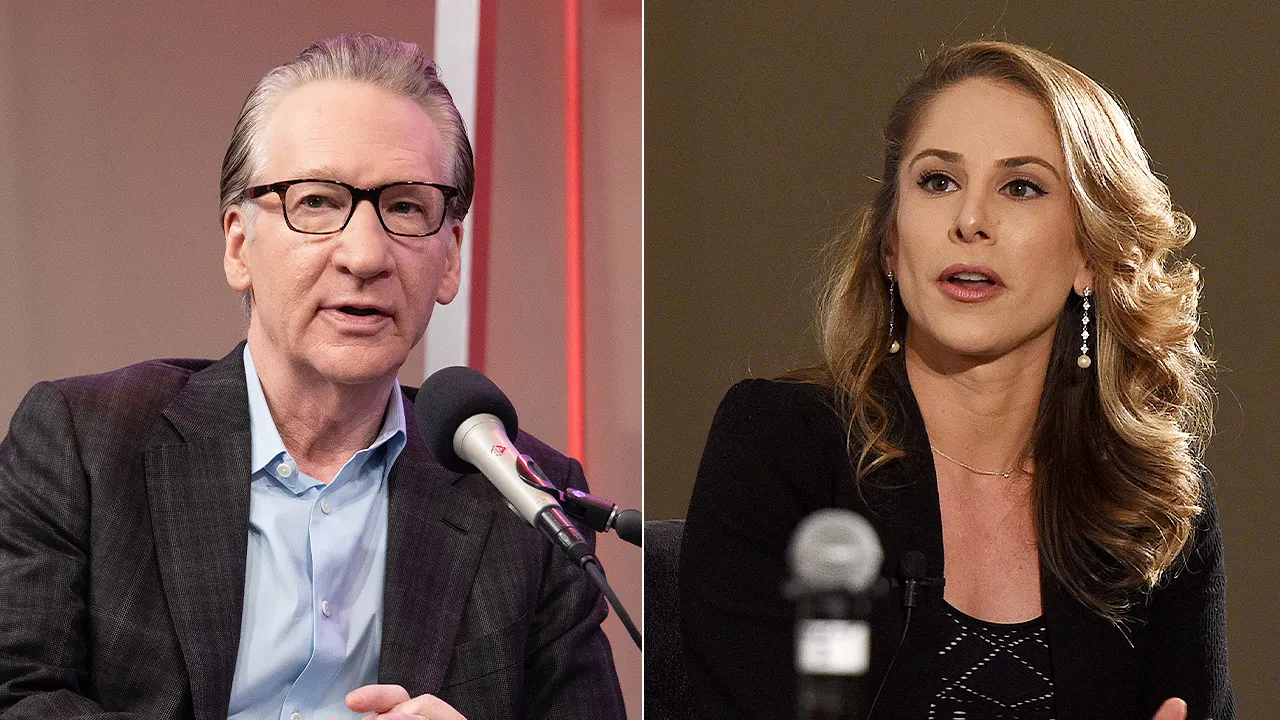
A casual, free-flowing podcast conversation quickly morphed into a heated geopolitical debate when comedian and commentator Bill Maher clashed with Ana Kasparian of The Young Turks during her recent appearance on his show, Club Random.
What began as a typical Maher-style discussion — part politics, part humor, part provocation — took a sharper turn when the topic shifted to the Middle East and whether a Western woman would feel comfortable living there.
Maher, who often stresses that he is not formally aligned with any political organization, posed a hypothetical question to Kasparian:
“Ana, you’ve got to go live in the Middle East… where would you live?”
He began listing countries one by one — Pakistan, Egypt, Jordan, Lebanon, Syria — adding commentary that blended sarcasm with dark humor. Kasparian immediately challenged his characterization of Syria, pointing out that parts of the country are still controlled by extremist groups.
ALSO READ : Kylie Jenner and Timothée Chalamet Steal the Spotlight in Matching Orange Looks at Marty Supreme Premiere
But Maher barreled on, even referencing Yemen “under Houthi rule,” before pivoting to Israel.
“Tel Aviv or the West Bank — Ramallah is wonderful in the fall, it gets lovely,” Maher said. What followed, however, pushed the discussion into far more personal territory.
Looking directly at Kasparian’s outfit, Maher asked:
“What city would you live in? What do you think you’d be comfortable in that dress?”
The remark noticeably shifted the tone of the conversation. Kasparian, known for her direct style on The Young Turks, pushed back firmly, suggesting Maher was oversimplifying deeply complex cultures and ignoring regional differences in laws, norms and women’s rights.
Maher defended his approach, insisting he was speaking about general realities in the region, not making personal judgments. But by this point, the exchange had clearly escalated beyond a casual hypothetical.
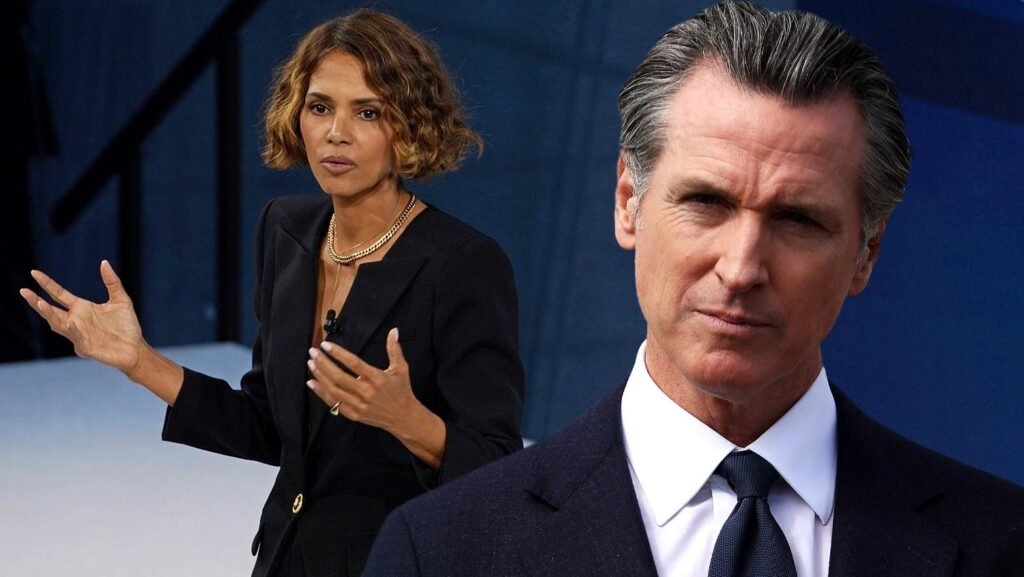
A Debate That Mirrors a Larger Global Divide
The tense moment reflected a broader, ongoing debate playing out across social media and political circles: How does the West talk about the Middle East without flattening its complexity?
Kasparian argued that sweeping generalizations — especially about women’s freedoms — feed into stereotypes that oversimplify lived experiences. Maher countered that refusing to acknowledge differences in legal and cultural realities is equally misleading.
As clips of the exchange circulated online, reactions were predictably polarized. Supporters of Maher praised him for “saying the uncomfortable truth,” while fans of Kasparian applauded her for challenging what they viewed as reductive framing.
Why This Exchange Matters
Both Maher and Kasparian command large online audiences. Maher hosts the long-running HBO show Real Time with Bill Maher, while Kasparian reaches millions through TYT’s digital platforms. Their confrontation — part humor, part philosophy, part geopolitics — reflects how discussions about Israel, women’s rights, and Middle Eastern politics have become flashpoints in Western media.
It also highlights something deeper: When conversations about geopolitics intersect with identity and personal appearance, the tension is almost inevitable.
And on Club Random, tension is something Maher rarely shies away from.
Politics
“If I Can’t Beat Jimmy Kimmel, I Shouldn’t Be President…” Trump Drops Bold Claim Ahead of Hosting Kennedy Center Honors
At a pre-event gathering, President Donald Trump predicted record-breaking ratings — and took a sharp swipe at late-night host Jimmy Kimmel.
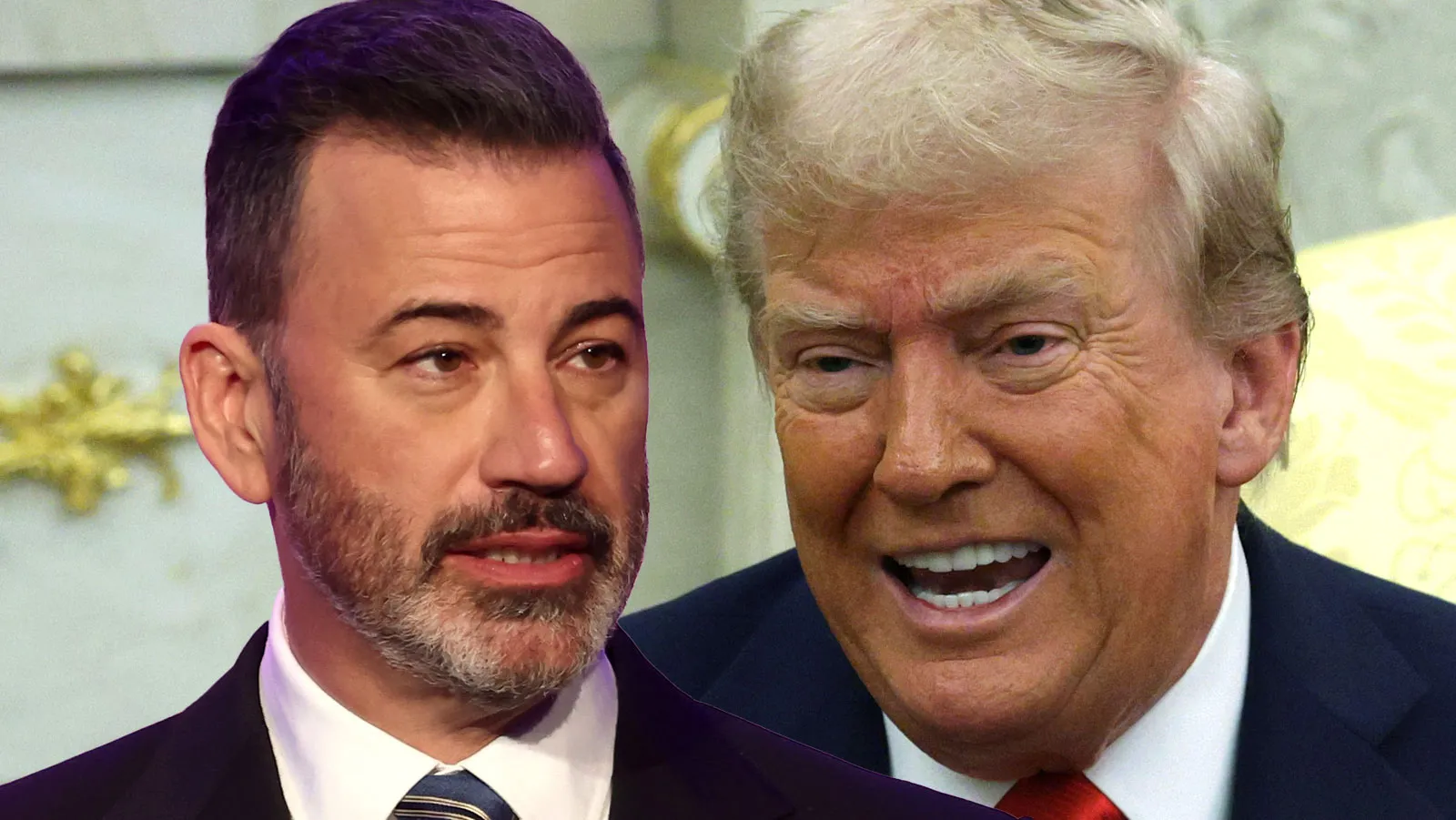
On the eve of hosting the prestigious Kennedy Center Honors, Donald Trump did what he often does best — make headlines before the event even begins. Speaking confidently at a pre-show gathering, Trump made several bold predictions about the upcoming ceremony, including one that instantly went viral.
“I believe this will be the highest-rated show they’ve ever done,” he told attendees, referring to the televised broadcast that will air later this month on CBS and Paramount+. With characteristic bravado, Trump added that while the awards have seen strong viewership in the past, “there’s nothing like what’s gonna happen tomorrow night.”
But it wasn’t his ratings prediction that raised eyebrows — it was his jab at late-night host Jimmy Kimmel.
“I’ve watched some of the people that host,” Trump said with a smirk. “Jimmy Kimmel was horrible. And if I can’t beat out Jimmy Kimmel in terms of talent, then I don’t think I should be president.”
ALSO READ : “Treylon Burks Stuns NFL With Gravity-Defying One-Handed TD… Fans Say ‘This Is His Odell Moment’”
Those in the room reacted with a mixture of laughter and surprise. Trump, who has a long-running feud with several late-night comedians, seemed to relish the moment. Though Kimmel has never actually hosted the Kennedy Center Honors, he did appear in the 2012 ceremony during a tribute to David Letterman — a detail Trump apparently glossed over.
Kimmel, meanwhile, has hosted the Academy Awards, the Primetime Emmys, and fronts his long-running late-night show Jimmy Kimmel Live! Yet Trump’s comment implied he expected comparisons to be inevitable — and not necessarily favorable from the mainstream press.

“We never had a president hosting the awards before,” Trump reminded the audience. “This is a first. I’m sure they’ll give me great reviews, right? They’ll say, ‘He was horrible. He was terrible.’ No, we’ll do fine.”
His tone shifted briefly toward sincerity as he thanked the attendees and spoke about the emotional weight of the upcoming evening.
“This is a special night,” he said. “By the end of these two days, you’re gonna say this is one of the most special days in your life.”
But even in the sentimentality, Trump couldn’t resist one more prediction — that several guests had already told him the day felt life-changing.
With Trump’s boldness, the anticipation around the Honors ceremony is higher than ever — not only for the performances, but to see just how the president’s first hosting attempt will unfold on stage. One thing is certain: the broadcast won’t lack drama, humor, or spectacle.
-

 US News1 week ago
US News1 week ago“She Never Made It Out…” Albany House Fire Claims Woman’s Life as Family Pleads for Help to Bring Her Home
-

 Entertainment7 days ago
Entertainment7 days agoXG Star Cocona Shares a Brave Truth at 20 — “I Was Born Female, But That Label Never Represented Who I Truly Am…”
-
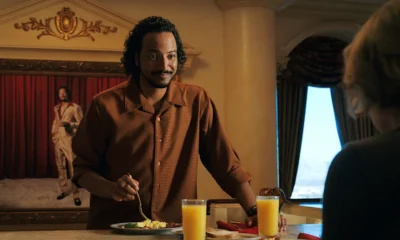
 Entertainment7 days ago
Entertainment7 days agoSamba Schutte Reveals the Surprise Cameo in Pluribus That “Nobody Saw Coming”… and Why John Cena Was Perfect for the Role
-
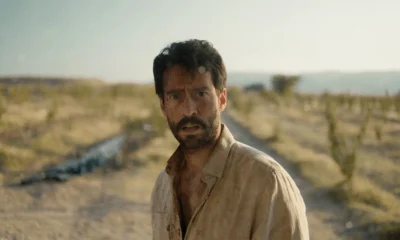
 Entertainment1 week ago
Entertainment1 week agoNika & Madison stuns global audiences as director Eva Thomas reveals why “resilience, not fear, drives Indigenous women on the run”
-

 Tech1 week ago
Tech1 week agoAfter Losing Over $70 Billion, Mark Zuckerberg Finally Admits His Biggest Bet Is “Not Working” – Meta Plans Massive Cuts to Metaverse Budget
-

 Entertainment5 days ago
Entertainment5 days agoSaudi Arabia’s entertainment revolution… Red Sea Film Foundation CEO Faisal Baltyuor says he ‘wears many hats’ — but one mission drives them all
-

 Sports5 days ago
Sports5 days agoDodgers Stun MLB With Blockbuster Move, Sign Elite Closer Edwin Díaz to Three-Year, $69 Million Deal
-

 Entertainment5 days ago
Entertainment5 days agoTeyana Taylor wakes up to a Golden Globe call at 5 a.m.… ‘Am I dreaming right now?’ — and why she’s already begging Paul Thomas Anderson for more












